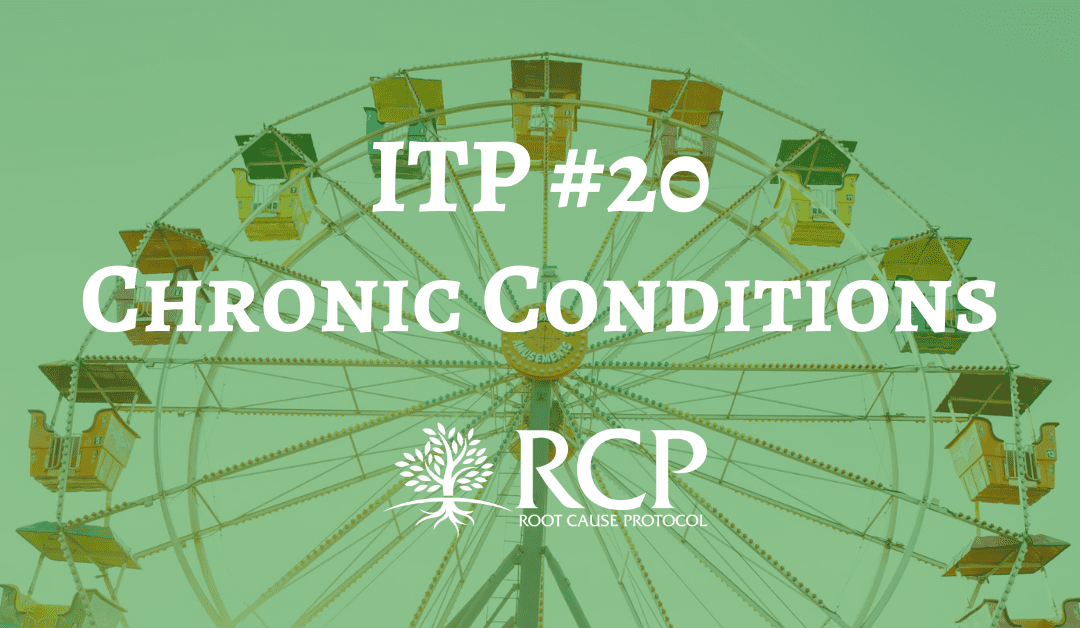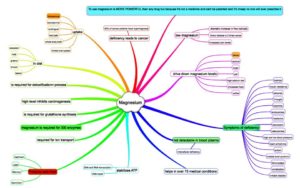(Formerly #23)
I would like to present a more succinct logic for how iron dysregulation and magnesium deficiency are at the heart of most, if not all, of our chronic conditions.
Here is my premise in a nutshell:
Increased dietary and supplemental iron → Increase magnesium deficiency → Increased oxidative stress! → Increase protein oxidation → Increase protein carbonyls → Increased chronic disease (that are often labeled as Neurodegenerative Disease, Heart Disease, Liver Disease, Kidney Disease, Cancer, etc.)
WARNING: For those looking for fast and easy in this post will not appease. However, what this series of summary comments and citations does do is explain why I am fundamentally crazy over magnesium and ceruloplasmin.
- Increased dietary and supplemental iron;
okay this is not academic but it’s a compelling piece on how all this iron insanity started and has been building for 70+ years:
“Iron, food enrichment and the theory of everything.”
freetheanimal.com/2015/06/enrichment-theory-everything.html
If you want a more academic piece, the University of Chicago should suffice:
Bishai, D. (2002). “The History of Food Fortification in the United States: Its Relevance for Current Fortification Efforts in Developing Countries.”
web1.sph.emory.edu/users/hpacho2/PartnershipsMaize/Bishai_2002.pdf
- Increased iron leads to magnesium deficiency:
Kimura.M., Yokoi, K. (1996). “Iron accumulation in tissues of magnesium-deficient rats with dietary iron overload.
www.ncbi.nlm.nih.gov/pubmed/8907021
(Please read the last sentence of this abstract slowly.)
- Increased oxidative stress and protein oxidation from all that iron. This is the recognized “go to” citation for those topics:
Halliwell, B., Gutteridge, J.M.C. (1984). “Oxygen toxicity, oxygen radicals, transition metals and disease.”
https://www.ncbi.nlm.nih.gov/pmc/articles/PMC1153442/
(I’m reading their book on these metabolic processes from 1994, and it’s a genuine toe-curler.)
- Increased protein carbonylation from all that iron:
Cornejo, P., et al. (2005). “Chronic iron overload enhances inducible nitric oxide synthase expression in rat liver.”
repositorio.uchile.cl/bitstream/handle/2250/127165/Cornejo_P.pdf?sequence=1Now here’s where it gets really interesting.
- Magnesium deficiency increases protein carbonyls:
Trust me, that is not what we are seeking in our bodies, our tissues, and our cells. Here is the relevant abstract:
Stafford, R.E., et al. (1993). “protein oxidation in magnesium deficiency rat brains and kidneys.”
www.ncbi.nlm.nih.gov/pubmed/8240333
Here the link to get the full article: Please say a prayer of thanks for W. B. Weglicki, MD and his research team at GWU Medical Center: https://www.ncbi.nlm.nih.gov/pmc/articles/PMC3753099/?fbclid=IwAR2Ckwea7xEQ3GevSagpWJlNIkZu1QNcPP0eoOnUOlkDLhCRiteXWfYL3vc
- And here’s the other side to this destructive oxidative process; Ceruloplasmin (Cp) inhibits protein carbonyl formation:
Krsek-Staples, J.A., et al. (1993). “Ceruloplasmin inhibits carbonyl formation in endogenous cell proteins.”
www.ncbi.nlm.nih.gov/m/pubmed/8425718/Ceruloplasmin (Cp) is the most misunderstood protein in the human body. It is often referred to as a taxi for copper. However, in fact, it’s more like a tank that has 8 copper atoms running it. It doesn’t take military experience to know that there is a major difference between those two modes of transportation.
One last thought:
- Know that ceruloplasmin (Cp) is subject to “oxidation” (aka aging), and that this is not a good thing for our overall health and well-being. But in this compelling study, they make it very clear that Cp oxidation is the cause of all neurodegenerative conditions. But it is hardly limited to dysfunctions and disorders of just the brain as the aging of Cp inhibits it’s elegant ferroxidase activity as well in fact promotes cellular iron retention:
Olivieri, S., et al. (2011). “Ceruloplasmin Oxidation, a Feature of Parkinson’s Disease CSF, Inhibits Ferroxidase Activity and Promotes Cellular Iron Retention.”
https://www.jneurosci.org/content/31/50/18568.full?fbclid=IwAR2kwFA41HaUxU0oumo1mt_PGipC31QOL9V8X92XqbzZDu93IR_ZhXKXwnE

So please know that these iron-induced processes are not just restricted to rats and other lab critters. In my humble opinion this iron dysregulation condition is a pandemic on this globe and knows no geographic boundaries.
Hopefully, this post can serve as a “go to” piece for those who are seeking to better understand and to better explain what all these iron switchbacks and inter-iron-dynamics are all about. Yes, iron metabolism is supremely confusing, but know that there is a powerful body of extensive research to support and expound upon each of the citations referenced above. All of the gifted iron researchers know how essential bioavailable copper is to all facets of iron metabolism.
So what’s this got to do with MAG (Magnesium Advocacy Group on FB)?
MAG [now RCP] is all about restoring metabolic balance in our cells, our tissues and our bodies. That healing process necessitates lowering the iron burden, enhancing the liver/brain’s natural production of the copper powerhouse, ceruloplasmin (Cp), and restoring mineral and magnesium balance to prevent oxidative stress from happening in the first place.
Clearly, there are numerous processes involved, but that’s the core focus of our strategy. I would venture to say that we are unique in our focus here at MAG [now RCP] and are very proud of our collective track record for identifying and addressing the underlying nutrient deficiencies and overloads that have historically and continue to keep us off-balance.
A votre sante!
MORLEY M. ROBBINS
For Facebook discussion:
www.facebook.com/groups/MagnesiumAdvocacy/permalink/973984906002912/









